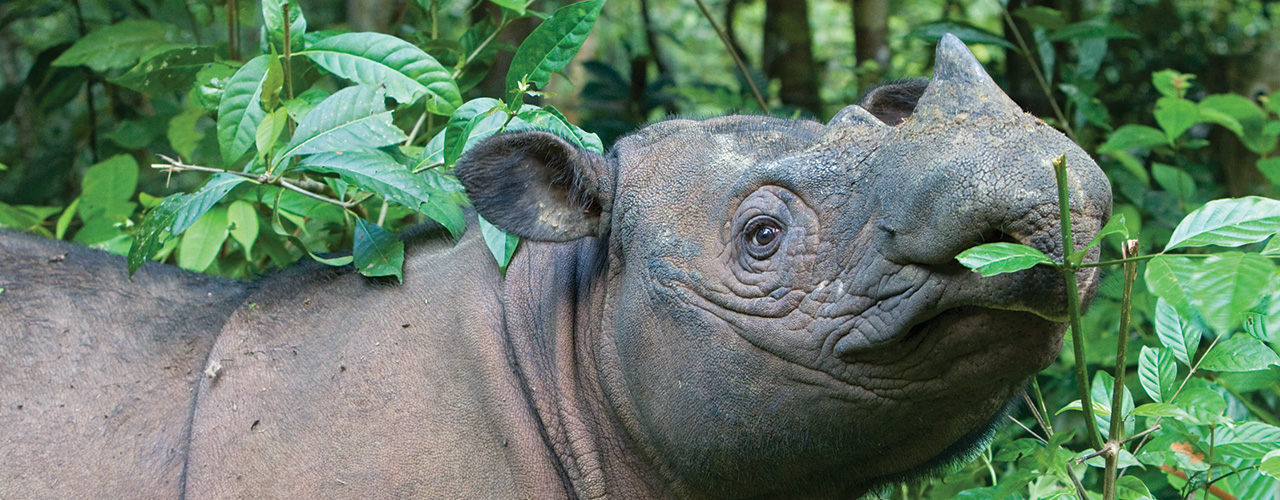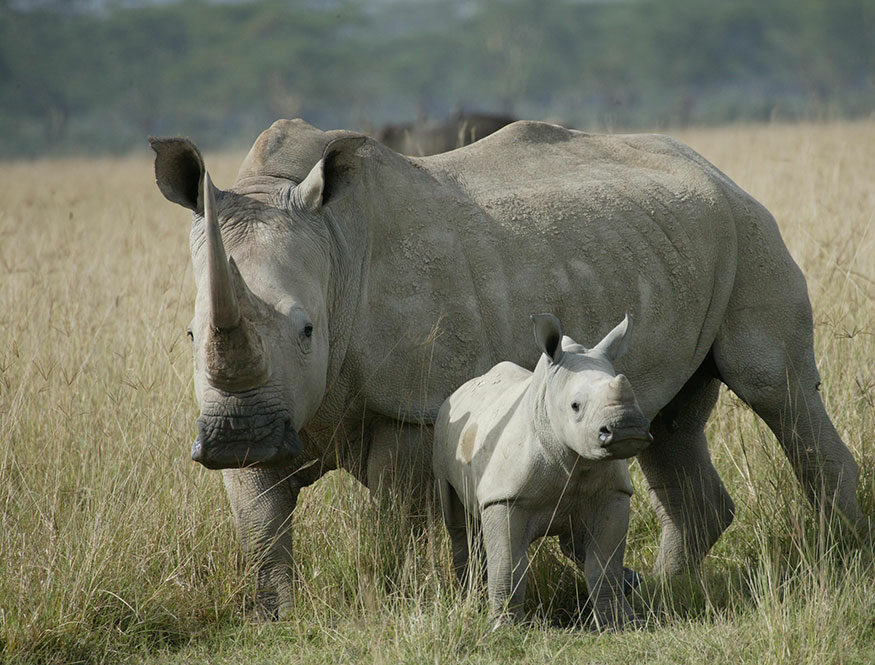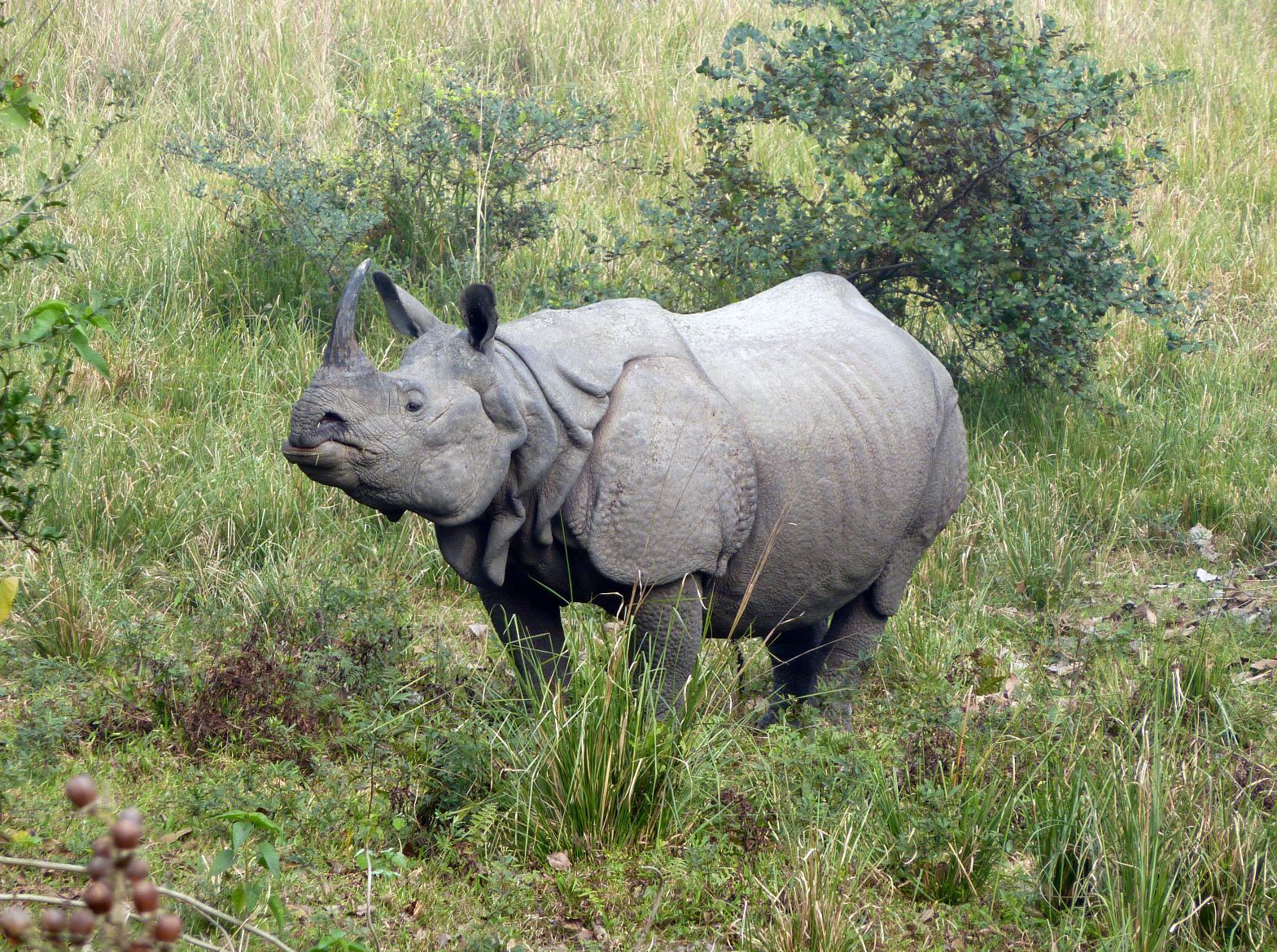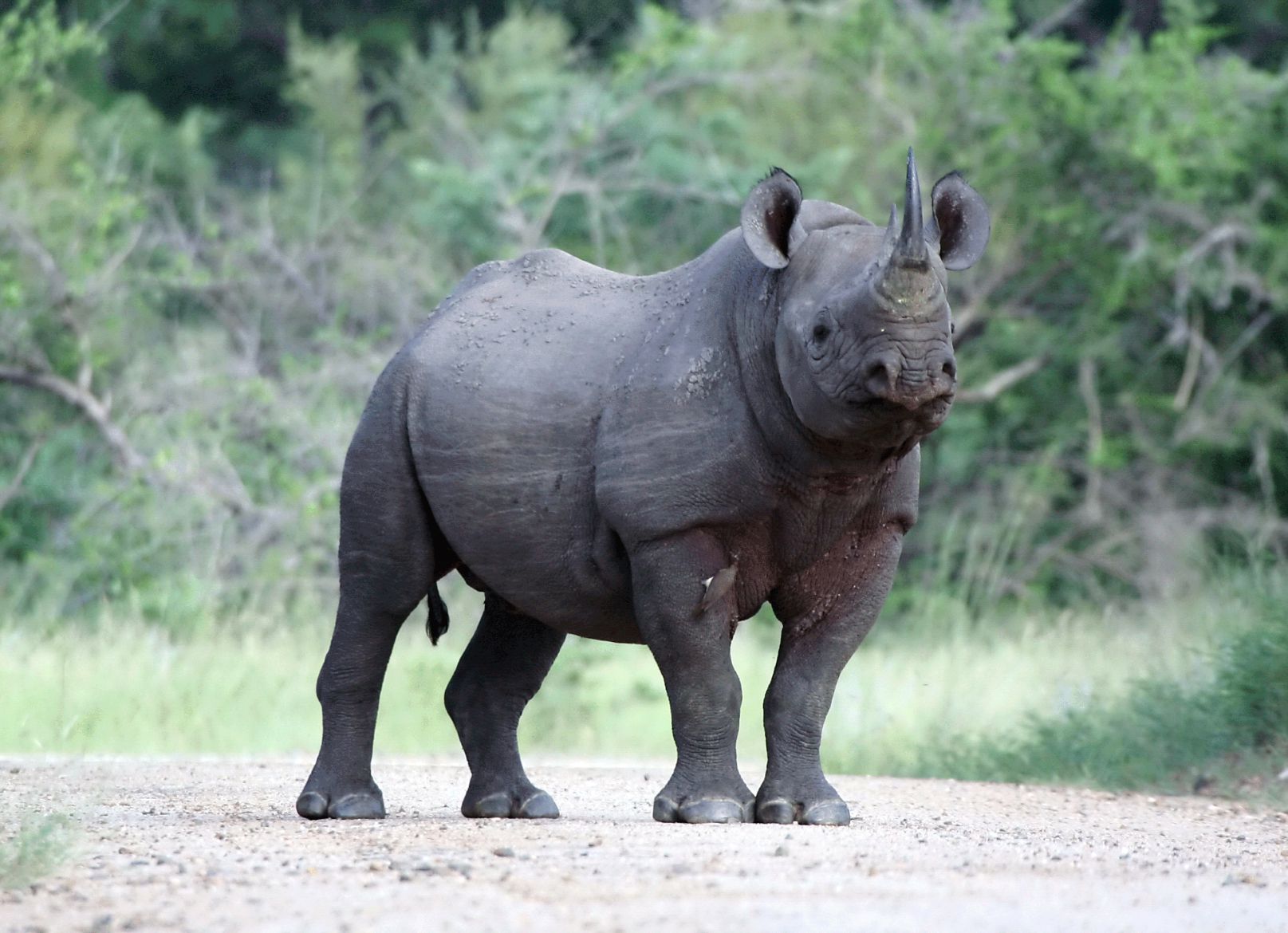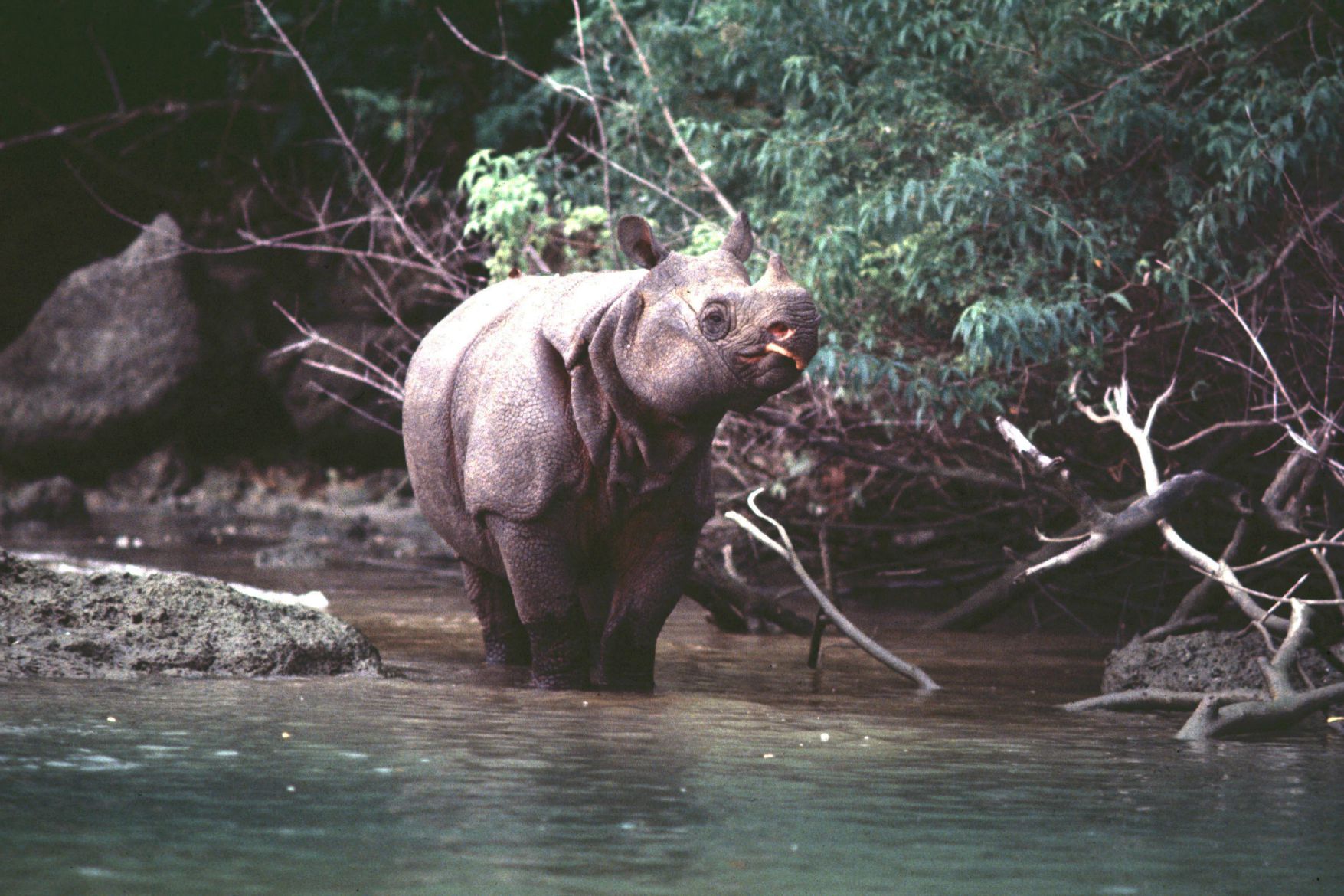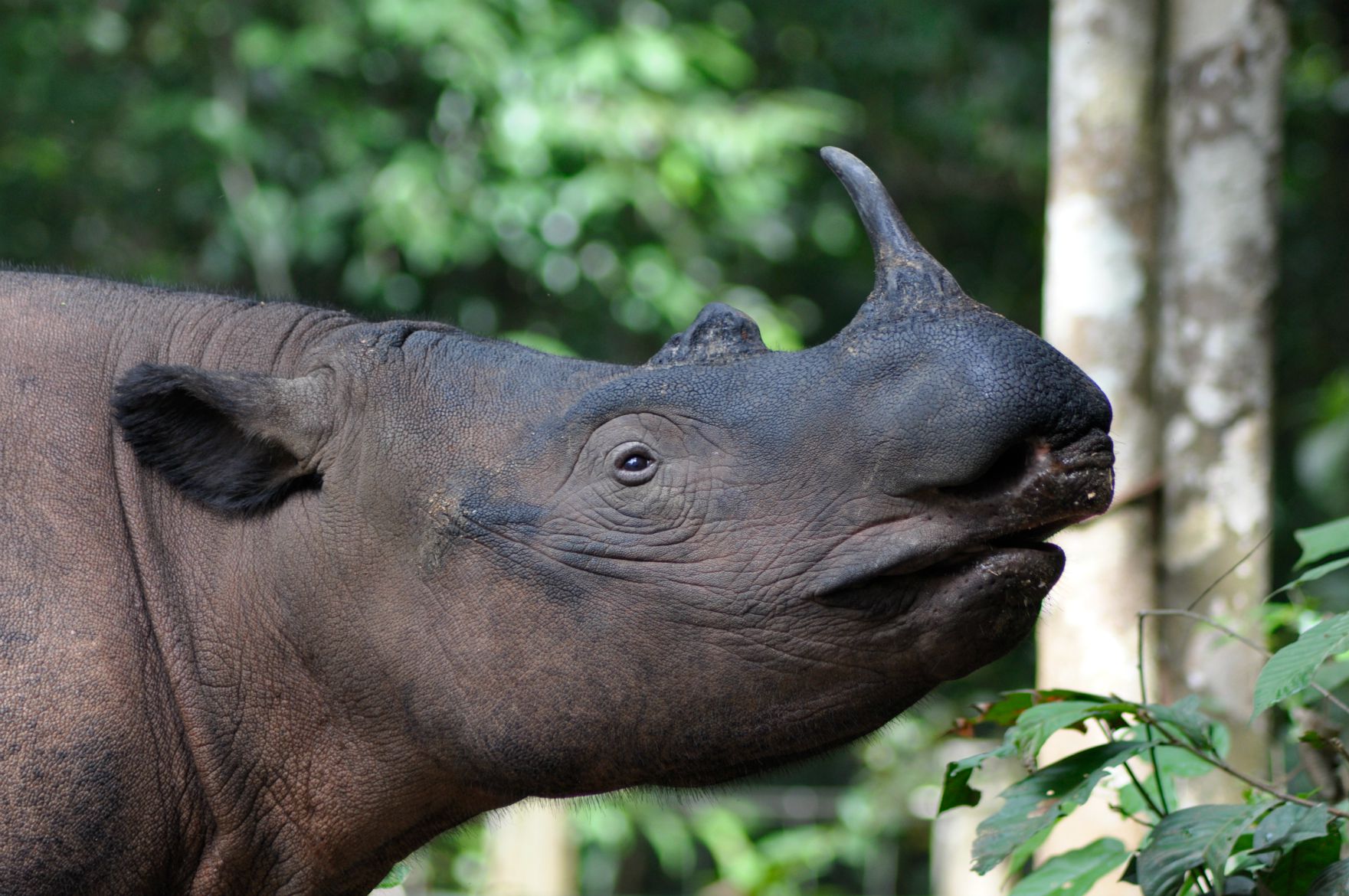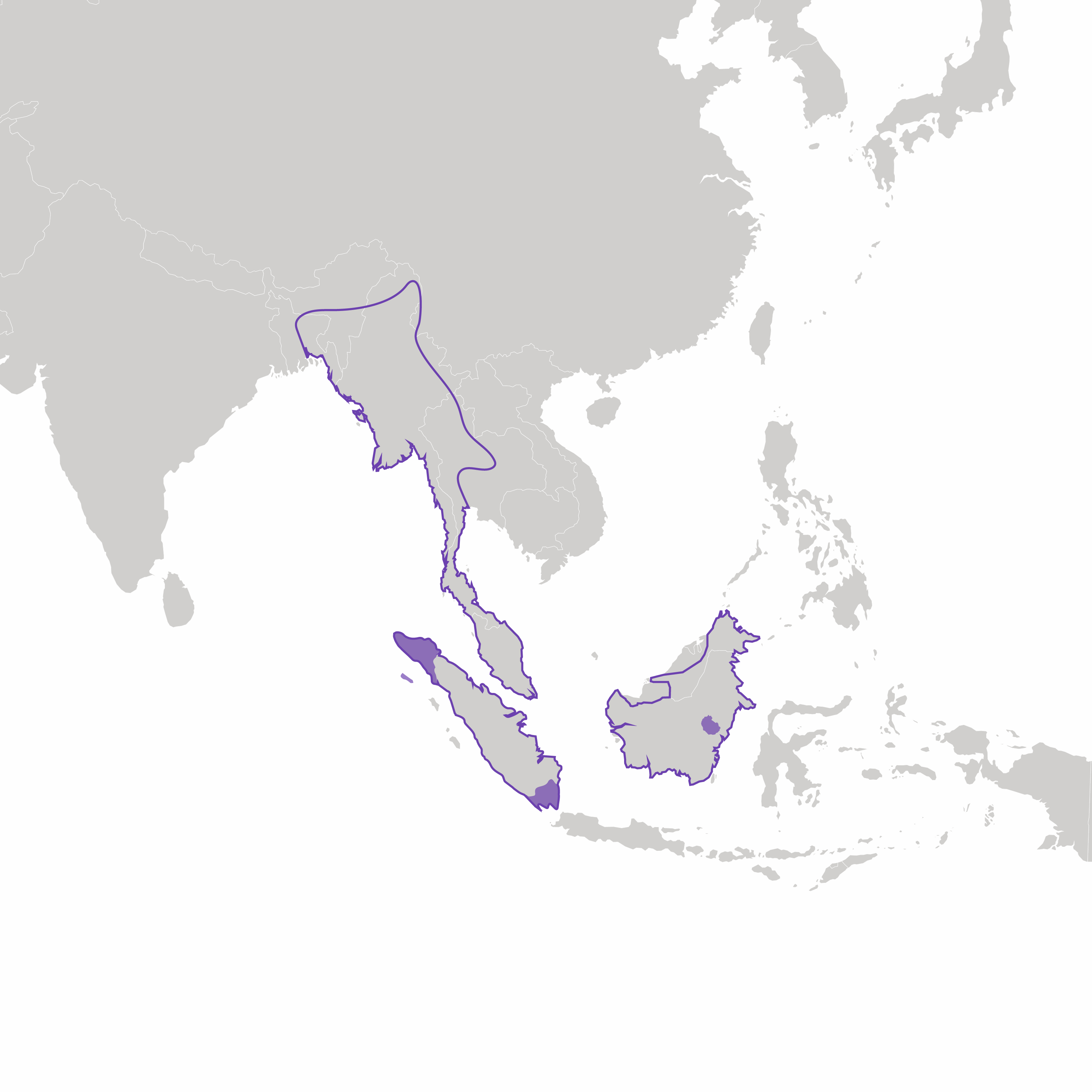The Rhino Family
Sumatran rhino
(Dicerorhinus sumatrensis)
Sumatran rhinos (Dicerorhinus sumatrensis) are also extant in just one country, Indonesia. The IUCN SSC Asian Rhino Specialist Group (AsRSG) reports that there are up to 4 isolated populations and as many as 10 subpopulations of Sumatran rhino left in Indonesia. Only one of these wild populations, in Gunung Lesuer, is believed to have enough individuals to be viable. Uncertainty is and has been the key word for tracking Sumatran rhino population trends over time. As this reclusive species seems to disappear further into dense jungles, direct sightings have become rare and indirect signs like footprints are getting harder to find. The government of Indonesia reports that there are no more than 80 Sumatran rhinos in total, while the AsRSG specifies that the actual count could be as low as 34-47 individuals with no single subpopulation having more than 30 rhinos. There has been no evidence of Sumatran rhino poaching found for over a decade – there also have been no naturally occurring carcasses discovered either, making the species’ disappearance even more of a mystery. The beacon of hope for the species is the breeding program at the Sumatran Rhino Sanctuary, a protected, semi-wild facility in Sumatra that has produced five calves and continues its breeding efforts to create an insurance population of rhinos.
IUCN Red List Status: Critically Endangered
Facts
BIOLOGY
- The Sumatran rhino lives in dense tropical forest, both lowland and highland, mainly on the Indonesian island of Sumatra.
- This species is a browser and an opportunistic feeder with a very varied diet that may include more than 100 plant species.
- Sumatran rhinos live between 35 and 40 years. Gestation lasts approximately 15-16 months, and cows are believed to give birth to one calf about every 3 years.
- These tropical forest dwellers are generally solitary in nature.
COMMON NAMES
Sumatran Rhinoceros
Asian Two-Horned Rhinoceros: the only two-horned rhino in the Asian region.
SCIENTIFIC NAME AND ORIGIN
Dicerorhinus sumatrensis
“Dicerorhinus”: from the Greek di, meaning “two” and “ceros”, meaning “horn” and “rhinos”, meaning “nose” and “sumatrensis” referring to Sumatra (with the Latin-ensis, meaning locality)
CURRENT SUMATRAN RHINO NUMBERS AND DISTRIBUTION
Fewer than 80 Sumatran rhinos survive in fragmented populations in Indonesia’s Bukit Barisan, Gunung Leuser, and Way Kambas National Parks, and a small population was recently found in central Kalimantan.
PHYSICAL CHARACTERISTICS
SIZE
Weight: 1,300 – 2,000 pounds (600 – 950 kg)
Height: 3 – 5 feet (1.0 -1.5m) tall at shoulder
Length: 6.5 – 9.5 feet (2.0 – 3.0m) length of body

HORN
Sumatran rhinos have two horns. The front horn is larger and measures 10 – 31 inches (25-79 cm) long. The second horn is smaller, generally less than 3 inches (10 cm).
OTHER FEATURES
Fringed ears and reddish-brown skin, variably covered with long hair.

